Boosting Building and Capturing Images since 2003

why sales needs marketing
Research has shown that when sales and marketing teams are in sync, brands are aligned in marketing plans, and tasks, they are

67%
more effective at closing sales.


Traditional marketing was mainly math and science based and marketers were typically MBAs. Today's marketing uses research, analytical & budgeting skills, but requires resourcefulness, psychology, and creative abilities.
This combination is rare to find in 1 person, and larger companies generally have entire marketing departments that delegate each task, and larger marketing agencies sometimes have each marketer work on a handful of client accounts, in order to balance the work load.
Modern marketing often uses a hybrid of traditional marketing such as mailers and cold calling, in addition to electronic marketing such as ecommerce, social media platforms, pay per click advertising, content marketing, educational marketing, email and text marketing, in addition to websites, landing pages & SEO to boost brand awareness, brand trust and ultimately, more leads for higher sales revenue!
modern buyer journey The New way people shop
With the advancements in technology, most everyone owns a computer and a cell phone. Google has become the way to find information about anything, anywhere, and at any time! This has also changed the way people shop. Most folks do not go to the store to look at things anymore! Most people have become avid online researchers on their computer or phone to learn everything they want to know about a product, service or a company, compare them to others and do not need a sales person to sell them something. Buyers are now empowered to find what they need themselves through the internet. This is true for business to business sales (B2B) and business to consumer (B2C sales).
The internet has the ability to reach nearly everyone, anywhere at anytime. Due to this, professional marketers target and segment your internet audience by their gender, age, things they search, things they are interested in, and what content they liked to see, and information they want to know. Professional marketers also research niche markets to learn current trends, and test platform algorithms with content, days and times, etc to learn what the platforms like Google, Facebook, LinkedIn, Twitter, Reddit, Instagram, TikTok etc show to the most people in your audience.
Old-school, traditional marketing is extremely limited in it's reach!
The internet exponanentially increases your potential for clientel or buyers.
By the time a potential buyer goes to your store front, or contacts you, they are already interested, which eliminates precious time cold calling, or money required to send out mailers and billboards etc.

modern buyer journey The New way people shop
Modern Marketing does a lot of research to create buyer personas to better target customers, landing pages that offer free or discounted products or services in exchange for email addresses that are then used in email marketing campaigns, loyalty discounts, and that tracks consumers on their websites to know what step they are on in their buying process they are on, why they have not checked out yet, or if they are gaining information or price shopping, so that these emails can be catered specifically to that buying stage.
Modern Marketers segment audiences into psychographically profiled categories so their landing pages, ads, and emails etc. target the right potential buyers, because this content caters to the concerns of that particular population.
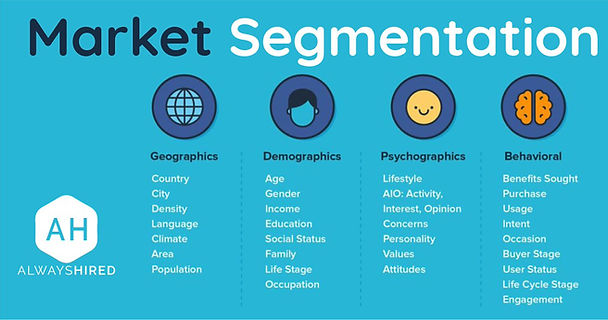
Social Media and Social Media Marketers

Social media marketers drive social media engagement through content marketing and engaging other accounts, forming electronic relationships with their social media audience to boost their social media presence in their audience's & potential audience's feed. They constantly experiment with, and study patterns in algorithms that effect how accounts get to be more popular (get more engagement) on each social media platform. They also test which niches, products and services do better on each platform. These platforms include their website, Reddit, Pinterest, YouTube, Vimeo, LinkedIn, Facebook, Instagram, Twitter, Wikipedia, Quora, etc. and live streaming channels like Tubi and Hulu, and if marketing to younger customers, SnapChat, IGTV, TikTok, & Twitch.
Some social media marketers produce and curate their own content, others post content that other creators produce and only do the research, analytics and posting calendars.
Some social media marketers are well versed in Pay Per Click advertising as well, and setting bid amounts for ad placement on google and social media platforms.
Content marketers create content or curate it from graphic designers, writers, photographers, web designers, video producers, (websites, landing pages, blogs, emails, photos, memes, graphics, gifs, and videos to cater to various audiences and niches in order to gain attention, brand awareness and brand trust, and even ad click through and conversion rates.
Graphic designers tend to design the traditional content, that is often used as part of the online branding process, and content, such as logos, signage, presentation booklets, slide shows, tradeshow booths, business cards, catalogs, letter head, brand compliance signatures, thank you letters, card mailers, & product guides etc.

it is more than just Creating content & posting
Effective social media marketers & content marketers test their content, such as topics, subject lines, images and video intros to see what buyers respond more positively to.
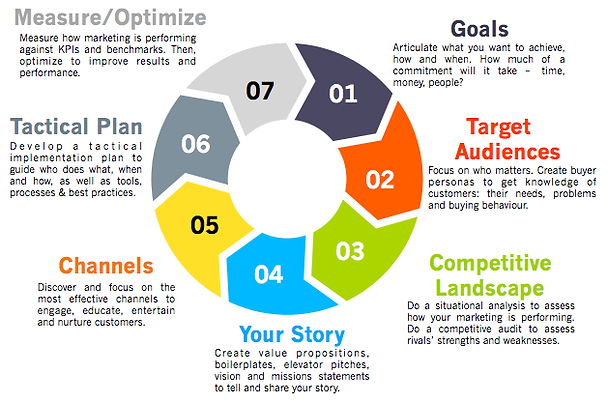
marketing automation
Marketing Automation is a way to centralize digital marketing efforts, manage leads & customers, create automated social media post calendars across multiple platforms, automated drip email campaigns & even send text message alerts, using 1 software dashboard.
Digital marketers may also create a lead scoring system to know which leads are worth pursuing and what type of sales/marketing nurturing they need. Some sales may need personalized emails, invitations or even calls.
Marketing saves the sales team a lot of time in prospecting leads, by making sure the leads are already interested. If done well, it may even show them what the lead's hangups are on the purchase so that the sales person knows what angle to work during their pitch.


Marketing funnels vs Flywheels the modern way people buy and sell
Marketing saves the sales team a lot of time in prospecting leads, by making sure the leads are already interested. If done well, it may even show them what the lead's hangups are on the purchase so that the sales person knows what angle to work during their pitch.
Up until 5 years ago, digital marketing was based on the paradigm of the funnel. Modern marketing utilizes the best marketing, which is word of mouth, and digital word of mouth is exponential!

Research shows that no matter what type of learner a buyer is, a majority of consumers, even business consumers, research what they buy. They want details, information, reviews etc. However, each buyer gets their information gets their info in various formats and on their favorite platform. Some love white papers, some love videos, some want to hear case studies, some just want to sift through photos and descriptions.
.jpg)
By covering as many digital avenues as possible, marketers not only plant a multitude of opportunities to find and be educated about your product/service, whichalso increases your SEO, and therefore, your brand awareness!
The flywheel concept is the new theory of marketing that harness the power of the inbound marketing funnel, with the email cadences in the nurturing phase, but also the word of mouth concepts through social media in the advocacy phase.
.jpg)
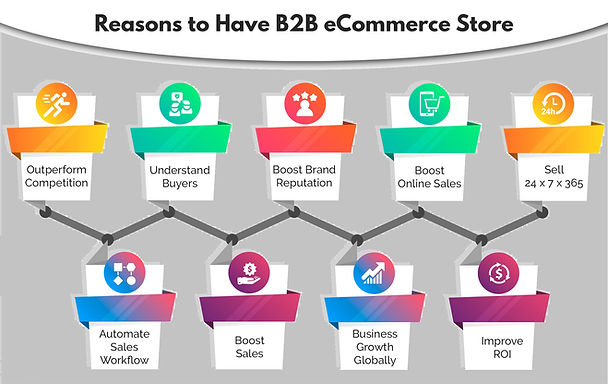
What is seo
Search engine optimization
SEO is how your products/services are found on search engines such as Google Chrome, Opera and Firefox web browsers, To be listed at the top within your service or product, you need to use marketing tactics that often, graphic and web designers do not know how to do it or even how to delegate what to do in order to achieve it.

B2B vs B2C Marketing
B2B and B2C marketing are both H2H (Human to Human) They are very similar. Today's shoppers, whether they are individuals or business owners, research products, and trust product reviews and want to know product features, and see demo videos.

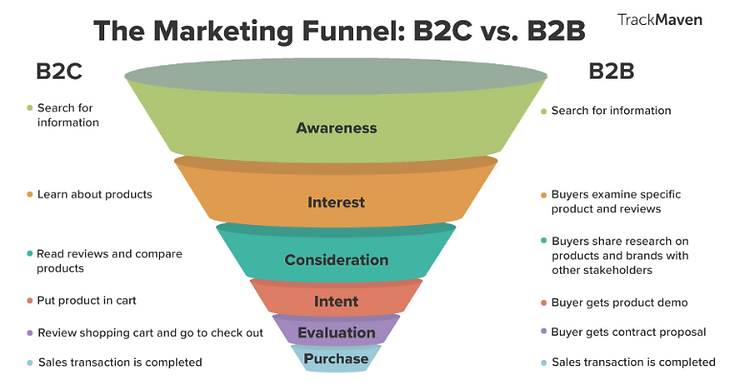

Whether marketing B2B or B2C, online content is key. Most people are visual learners, they need to see & read about what they are buying. Word of mouth is the best way to market, and online produces word of mouth by harvesting digital reviews for you, for the masses to see.
The Ultimate Guide to B2B sales boasts that 74% of B2B buyers conduct about half of their total research online before they make an offline purchase. Humans in general are more likely to buy from brands that have a high presences online because it creates more brand trust. A brand that is online has accountability because people can review their company, products and customer service.
Ultimately, a consumer (even a business consumer) wants to know
how you can solve their problem, and that is what modern marketing does - it educates the buyer on the product/services/business on their own time. The buyer does it on their own time often prior to deciding to even speak with a sales person. By the time they have an appointment with a sales person, they are a warm or hot lead!

Marketing Success Measurements
KPIs (Key Performance Indicators)
When your business is new to digital marketing, your progress may seem slow, because its success is not initially measured by revenue increases. For the first year, the marketing Key Performance Indicators (KPI)s for companies who are not utilizing PPC ads, should be focused on brand awareness metrics.
Your marketing manager should be give you monthly brand awareness reports after all of your social media platforms are branded, and blogging, video channel, and content calendars have begun posting, (typically after the first 3 months). These reports will be from statistics on social media platform, post, & website visits, follows, views, view times, saves, shares, likes, comments, messages & form fill outs (engagement statistics). They can also report which keywords people searched to find your website & what your website is ranking in the search for those keywords.

The longer your marketing efforts are implemented, the more successful they will be, and will generally follow a similar result pattern to the charts below as time goes on.
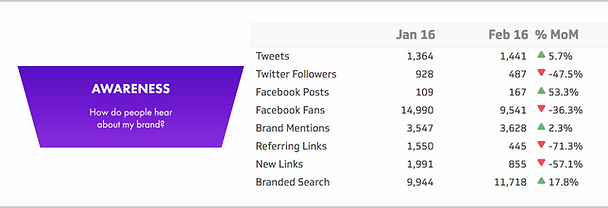

After email campaigns have been set up, and automated, open rates, click through rates, and view times, website visits can then be added to the Key Performance Indicators ( KPIs). After SEO has had 3-6 months to be established, and another 6 months of that brand awareness through word of mouth and reviews - then revenue can be a KPI.
Your professional digital marketer should be providing you monthly analytics of these KPIs along with recommendations to increase them.
The Ideal Modern Marketing Team
(Mid to Large Company)
Successful digital marketing involves knowing how to research online competitors, knowing how to form a solid on and offline marketing plan, SEO, Ad Placement, how to use effective platform keywords, writing amazing product or service descriptions, and know how to position ads, and work within a budget and learning how to list items for sale on a website, Google, Amazon, Etsy, Ebay, or Distributor's website etc. It involves researching competition pricing, and descriptions, and how yours is different, and content testing which photos, videos and descriptions are getting more views, conversion rates, and harvesting reviews.
They also know how to please social media algorithms through engagement and groups.
Modern digital marketing goes way beyond CRM and lead scoring, or just posting sales content on social platforms.
If you are a large business with a lower marketing budget, it is difficult to find all of the above skill and knowledge set in 1 person. I am one of the unicorns. However, depending on your business goals, there may not be enough hours in the day to accomplish all that is required by that 1 person to have to maximize your business's marketing efforts.
Ideally, you will want a marketing plan that also includes marketing expansion in the future. Marketing teams that have designated tasks are way more efficient and produce more revenue quicker! Below is an example of a well laid out marketing department. As companies grow, their marketing departments also grow. (For Example, Sweetwater, started out with a very small marketing department and now has this layout with multiple specialists under each department now in the last 5 years of their growth!).
Marketing is a long term commitment and it takes patience and the understanding of vanity metrics to measure increases in brand awareness. The companies that do not understand the above time, effort, and funds required to implement a 360 degree strategy that results in excellent brand awareness & brand trust, are the ones who go through single graphic design "marketer" like socks, because they are only looking at short term revenue goals. This should only be a short term marketing goal if you are running PPC ads or SM platform ads. It take some companies years to realize that allocating more funds to the marketing department, or hiring freelancers to do some of the content creation overflow, allows more time for implementing the strategy. It may also take years for a company to be able to afford these 360 degree plans, and they need to start with smaller goals. However, smaller goals, result in smaller results, and slower results in achieving long term goals..

When you just do not know where to start and need an expert marketing plan, marketing training or help with a brand or product launch,, or do not have the budget to hire what a full time permenant marketing person costs, hiring a contractor like CPP images is the answer! We can even help you hire a successful marketing team, as often times, you know your business, but not the marketing side, so knowing what to ask prospective marketing team members can actually waste time and money.
Let us help you set up your team or provide you services to help launch or boost your brand!